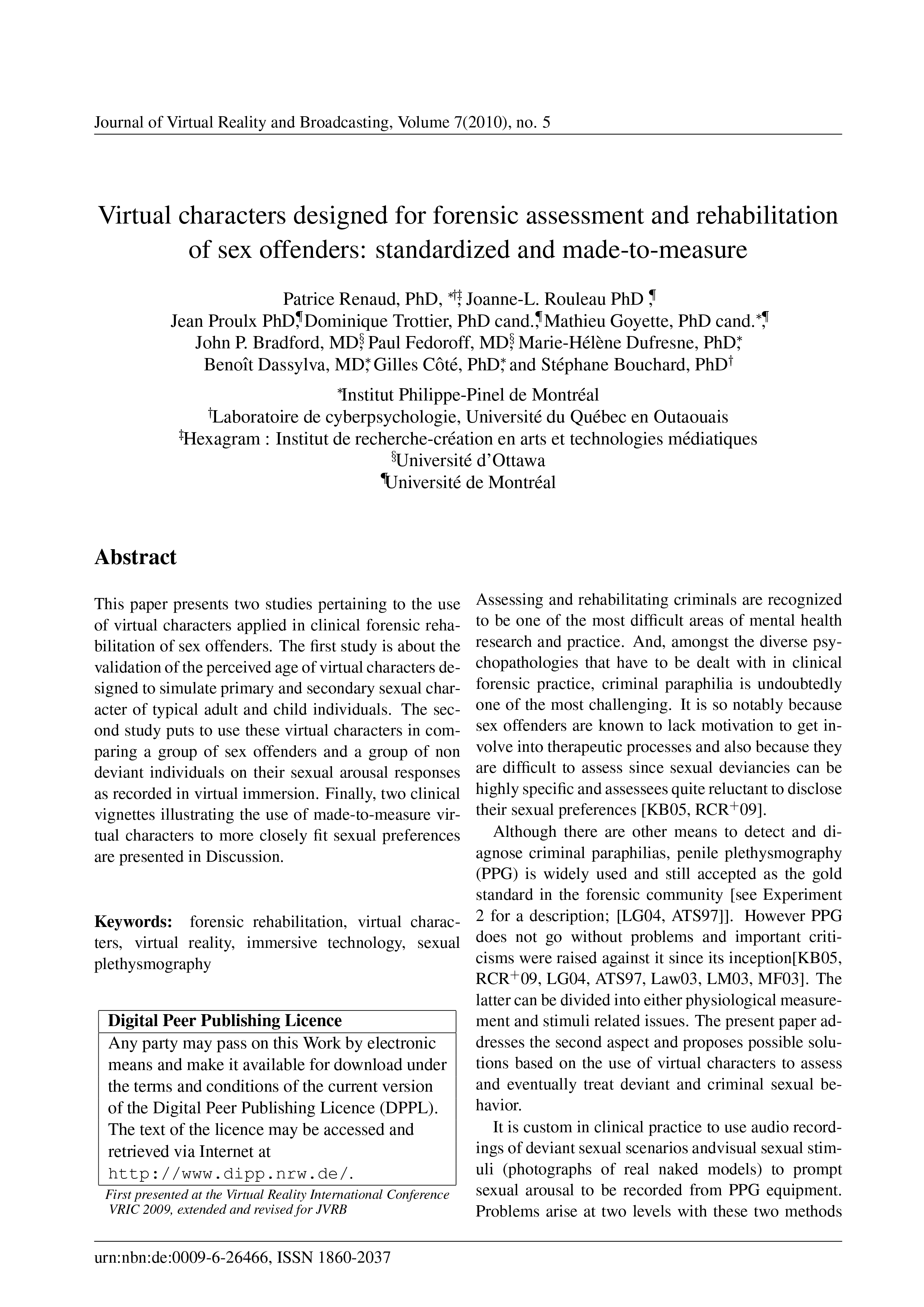Virtual characters designed for forensic assessment and rehabilitation of sex offenders: standardized and made-to-measure
DOI:
https://doi.org/10.20385/1860-2037/7.2010.5Keywords:
forensic rehabilitation, immersive technology, sexual plethysmography, virtual characters, virtual realityAbstract
This paper presents two studies pertaining to the use of virtual characters applied in clinical forensic rehabilitation of sex offenders. The first study is about the validation of the perceived age of virtual characters designed to simulate primary and secondary sexual character of typical adult and child individuals. The second study puts to use these virtual characters in comparing a group of sex offenders and a group of non deviant individuals on their sexual arousal responses as recorded in virtual immersion. Finally, two clinical vignettes illustrating the use of made-to-measure virtual characters to more closely fit sexual preferences are presented in Discussion.
Published
2010-08-19
Issue
Section
VRIC 2009





